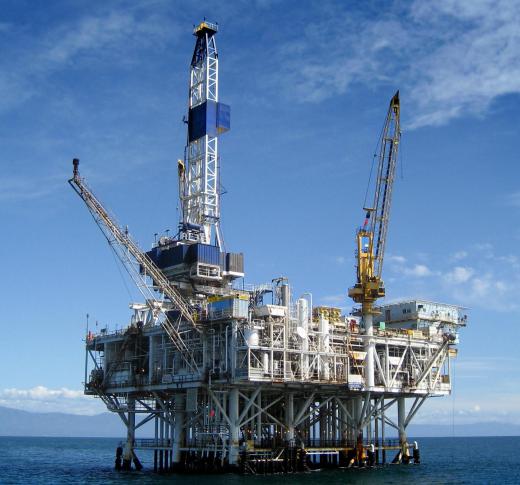What Is Seismic Drilling?
 Mary McMahon
Mary McMahon
Seismic drilling, also known as shot hole drilling, is drilling conducted as part of a seismic survey of a geologic formation. In such surveys, the team uses a series of controlled vibrations to generate a map of subsurface structures. This map can determine where deposits of usable material lie and how accessible they will be to drilling equipment. Seismic surveys are an important part of oil and gas exploration, and they are also used by researchers who want to map geologic formations for scientific purposes.
In seismic drilling, a company uses a specially designed drill to dig a hole to the desired depth. Air and water drills are both available for this purpose, and they are often mounted on sledges or mobile platforms. This allows the team to quickly move the drill between locations, which can be critical on a large survey. The time needed to set up a drilling platform and stabilize it can add considerably to the overall time needed for the survey, and thus teams try to use mobile drills when it is possible to do so.

After sinking a hole, the members of the team can mount explosives inside. These explosives will cause underground vibrations when they go off. With the use of seismic equipment, the team can follow the movement and reflection of the vibrations. This information can help them construct a map of underground features and formations. The seismic drilling team can include geologists, explosives experts, and other personnel with training in seismic surveys.
A permit is usually required for seismic drilling. The process can be disruptive and may cause problems for plants, animals, or residents in the region. Permit applicants must describe the area they want to work in and what they will do there. While on site, members of the team usually follow set company protocols to make the site as safe as possible. They also control waste material to keep the site clean and orderly.
If seismic drilling suggests that a formation is viable, the team can pinpoint some locations to drill actual wells. The company may sink some test wells to confirm the findings before it starts full-scale production on the site. This investigation and exploration can be expensive, especially when companies consider that not every target site will yield usable deposits. Some sites may not have any useful material, while other deposits may be visible on a seismic survey, but essentially unreachable because of their depth or configuration.
AS FEATURED ON:
AS FEATURED ON:











Discuss this Article
Post your comments